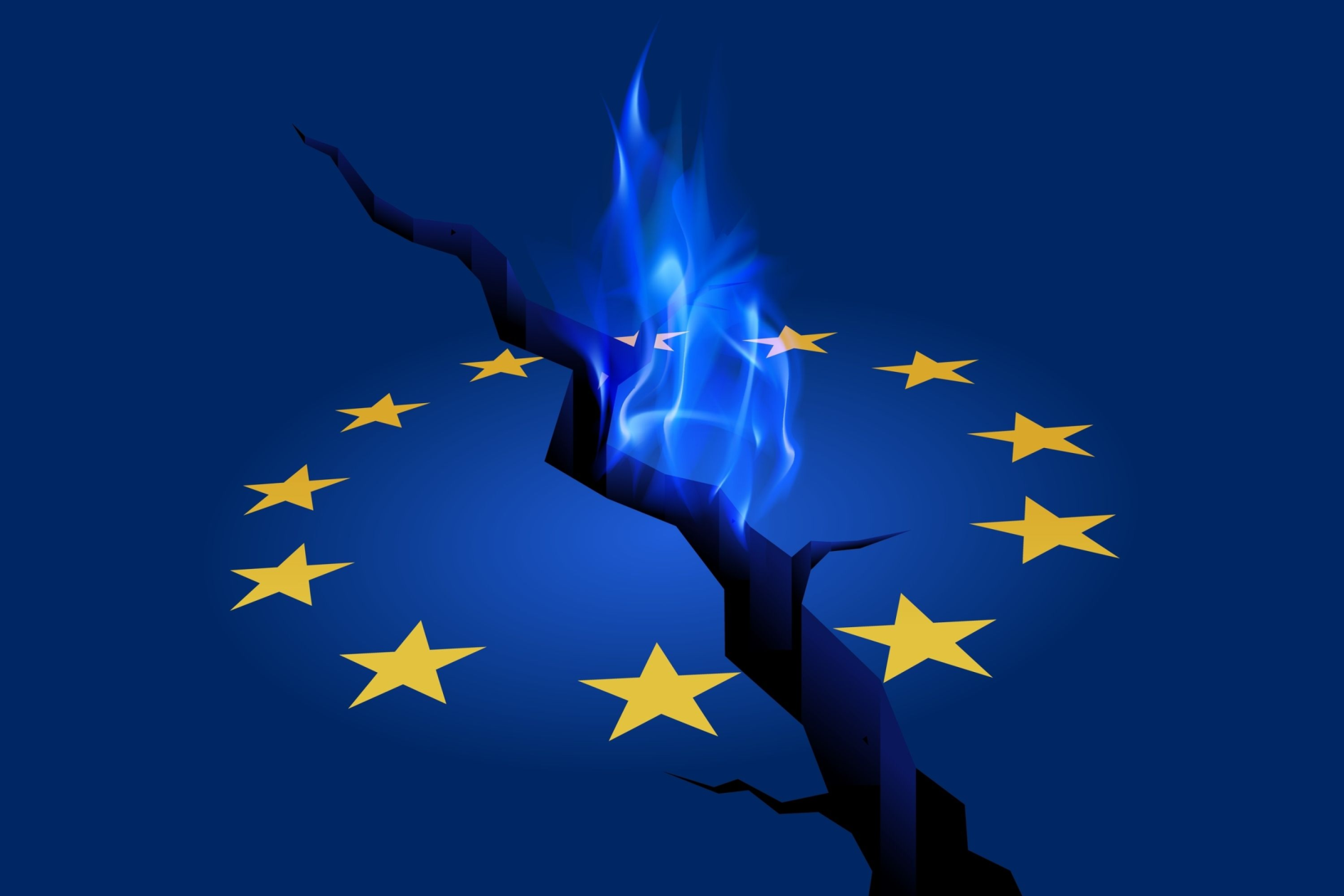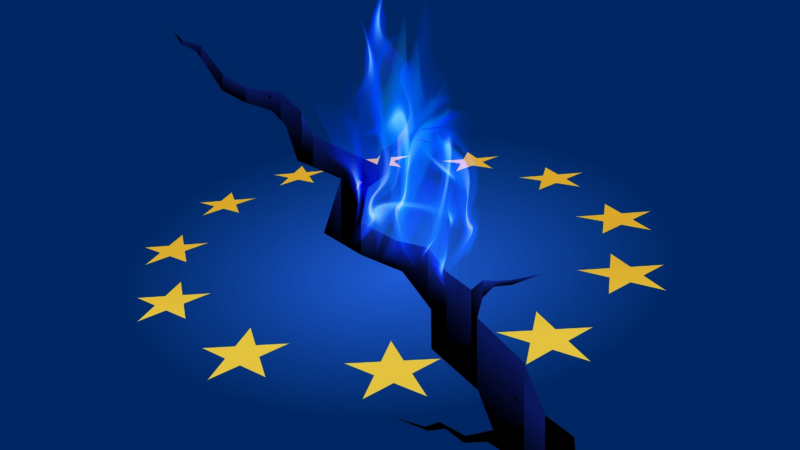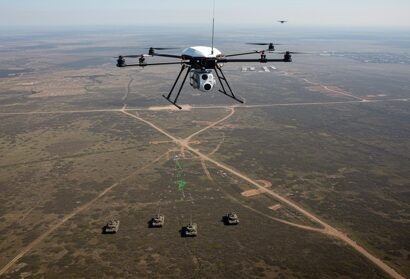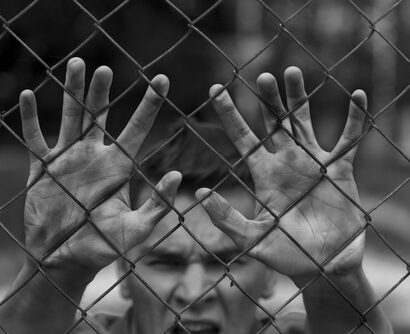Abstract: As global geopolitics are shifting towards profound competition between China and the United States, and with Russia engaging in a war against Ukraine, the authors advocate for a European realism based on a robust economy and a modernised military. Acknowledging that all successful grand strategies begin with domestic policies to consolidate material power, we must accept that the European Union’s (EU) situation is no exception. Data indicates that the EU member states cumulatively possess the necessary resources to compete equally with other global powers. However, a divided EU will likely become a spectator rather than a relevant actor in global political affairs.
Problem statement: How can the EU gain strategic sovereignty and avoid becoming a pawn in the great power competition?
Bottom-line-up-front: Significant advances have been made in the EU’s strategy, but they are still limited compared to the actions of other relevant geopolitical actors. The EU must focus on sharing the burden in NATO by constructing a formidable deterrent. However, achieving this goal is presently unfeasible with the present industrial capabilities in the EU. Hence, it is necessary to catalyse the European military-industrial complex if the EU aspires to establish itself as a major player on the global stage.
So what?: The EU has already taken the necessary steps in this direction by adopting its Strategic Compass, but more needs to be done to keep pace with other geopolitical actors. The EU must focus on utilising its resources and implementing its grand strategy, starting with domestic policies to consolidate its material power. Building a powerful military deterrent requires a functioning military-industrial complex and restarting the European industry. By doing so, the EU can compete for global power status.

Source: shutterstock.com/badwiser
Strategic Sovereignty Through Realism
The European Union’s (EU) Strategic Compass was adopted nearly a year ago and is the foundation for an EU grand strategy. While significant progress has been made in the EU’s strategy, it still lags behind other relevant geopolitical actors such as India, China, and the US, all preparing for a much more competitive (dis)order defined by a systemic struggle between the US and China analogous the ongoing Russia-West confrontation.
While significant progress has been made in the EU’s strategy, it still lags behind other relevant geopolitical actors such as India, China, and the US, all preparing for a much more competitive (dis)order defined by a systemic struggle between the US and China analogous the ongoing Russia-West confrontation.
The EU must embrace a realist grand strategy to secure strategic sovereignty and avoid becoming a mere pawn in the global struggle for dominance. Although the road ahead is challenging, it is not too late for the EU to aspire for a place among the global leaders. The path to strategic sovereignty requires a commitment to strategic thinking, mobilising all resources, and implementing a comprehensive grand strategy that begins at home. The EU can assert its strategic sovereignty and become a competitive geopolitical player by adhering to a realist approach and sticking to its grand strategy.
Defining the External Environment
The EU is facing a highly competitive and fragmented world of critical uncertainties. Russia’s war against Ukraine—which lies directly on the EU’s eastern flank—is just one chapter in a long-term confrontation with Moscow, which will likely remain extant for an extended period. Russia’s war in Ukraine also highlights the threat posed by hostile actors seeking to exploit vulnerabilities and sow division within the EU.
Moreover, the EU has understood the dangers of an interconnected world. The weaponisation of information, space, geoeconomics, and geopolitics can pose a significant risk to its stability and security. The EU must be active in its approach to these challenges and work to strengthen its resilience and ability to respond to such threats. To be adequately active will require a comprehensive and integrated approach that considers the complexities of the global landscape and the evolving nature of security challenges in the 21st century.
The EU must also take concrete steps to ensure its security and stability in this complex world. To achieve this, the EU should prioritise the development of military deterrents and focus on strengthening its eastern flank. Given the challenges posed by China[1] and the potential for domestic turmoil in the US—as manifested in Trump’s supporters’ attack on the capitol—burden-sharing within NATO should remain a top priority for the EU member states.[2] Regarding burden-sharing, the EU should focus on enhancing its eastern flank in the immediate term and developing the armed forces comparable with other relevant actors in the medium to long term to enable the European allies to take a leading role during future security crises.
The EU should focus on enhancing its eastern flank in the immediate term and developing the armed forces comparable with other relevant actors in the medium to long term to enable the European allies to take a leading role during future security crises.
Strategic planning aims to anticipate and prepare for a likely worst-case scenario. In the next decade, we face several unpleasant scenarios; the situation in Ukraine may become a frozen conflict, with both parties waiting for the status quo to shift in their favour.[3] Meanwhile, the US and China are increasingly entrenched in geopolitical competition in the Indo-Pacific, with the risk of systemic conflict looming over the horizon. With even a slight shift in the current status quo or the preparation for the worst-case military escalation, Ukraine would be at risk of a new surge of violence; with the US unable to intervene swiftly and resolve the situation, we must ask: would the EU be able to prevent a geopolitical catastrophe on its own borders?
A European Defence Union
The lesson of the 21st century’s first decades for the EU is clear: united, we are strong; divided, we are weak. Two key indicators – GDP and military spending, highlight this point. Despite the EU’s collective GDP of €16.03 trillion in 2021, it lags behind China’s €16,61 trillion and the US’ €21,75 trillion. This disparity is even more pronounced when considering individual European economies such as Germany, Europe’s largest economy (€3,97 trillion), and France (€2,76 trillion) next to non-European players such as Russia (€1,66 trillion) and India (€2,97 trillion). Moreover, the GDP of Hungary is €168,84 billion, and Poland’s is €633,37 billion.[4] Unsurprisingly, external actors such as Russia and China prefer to interact with individual states in Europe rather than the EU as a unified block.
The comparison of defence spending paints a concerning picture of European strategic sovereignty. Despite a significant share of defence spending, the European powers seem unable and so far unwilling to protect the continent from the spill-over effects of growing military conflicts and ongoing wars. This is evident from the contrast between the cumulative defence spending of the EU, which was €239,73 billion in 2021, and other major powers such as the US, which spent €746,24 billion, and China, which spent €273,31 billion, in the same year. Moreover, France’s defence spending is €52,80billion, and Germany’s €52,29 billion.[5] Even though European military spending in 2022 will be much higher due to the war in Ukraine,” it is a false economy as it is not really one budget, but rather 27, along with inherent duplications and inefficiencies. Furthermore, there is no strategy for developing common European military forces to address security challenges in Eastern Europe and potentially tackling crises in Africa and the Middle East if necessary.
What does it mean to “keep pace with other relevant actors”? For illustration, with annual spending of €60,63 billion, Russia had a military force of approximately 12,000 tanks before the invasion of Ukraine. China operates almost 5,000 tanks, and India – with a defence spending of €73,69 billion, has 4,500 tanks. By comparison, Germany only operates 266 tanks, while France has 400 tanks and Poland – has 863 tanks,[6] while the European Defense Agency states that the EU member states have 5000 tanks together with annual defence spending four times that of Russia.[7] However, compared to Russia, the EU can count only on the French nuclear triad, which is one-twentieth the size of its Russian counterpart; the EU also lacks niche technologies such as hypersonic weapons.
EU member states have 5000 tanks together with annual defence spending four times that of Russia.
Against this backbone, this assessment highlights the lack of a unified strategy for European military forces’ development to tackle specific threats, making the need for strategic planning and a comprehensive strategy for the European defence industry even more imperative.
Domestic Policies
As the EU faces difficult times, confrontation with Russia has pushed for further diversification in the energy supplies. Apart from ongoing challenges, the international system faces intense inter-state competition. Therefore, reducing dependence on external actors may seem logical, but it is not straightforward in a world where resources are scarce. The EU should prioritise domestic stability before embarking on external policies.
The EU has been grappling with sluggish economic growth for years, with industrial output failing to return to pre-2008 levels.[8] There is a need to focus on the strategic significance of various industries, particularly after seeing how the automotive industry has suffered heavy blows during the supply chain disruptions following the COVID-19 pandemic. To tackle these issues, the EU should initiate strategic reserves stockpiling and re-evaluate the market with strategic commodities such as oil, gas and potentially agriculture-related production.
Revitalising Europe’s economy and regaining its position as a global economic power requires more than just building resilience. The EU’s strategy of becoming a global trading power through the New Green Deal, Fit for 55, and RepowerEU is a step in the right direction. However, in the short to mid-term, it is crucial to revive European industry to meet internal demands and effectively compete with China, India, and, if necessary, the US.
Deterrence Capabilities
The EUs defence industry issue manifests both hesitations to kick-start the EUs industrial base and build a powerful deterrent. While the war in Ukraine demonstrates that the inter-state conflict is not extinct, the difficulties in supplying Ukraine show that the EU has failed in a task to prepare for state-related challenges on its borders. The capacity to build a powerful military deterrent has become imperative in ensuring stability and building trust in uncertain times. The military-industrial complex must provide a robust economy and a credible military presence. However, the recent debate surrounding providing military aid to Ukraine highlights the shortcomings of Europe’s once-dominant industry. Despite the political will to send heavy weapons to Ukraine, there are currently insufficient industrial capacities to meet the needs of that war-torn country.[9]
Moreover, as the Central and Eastern European (CEE) countries seek to modernise their militaries, it becomes evident that the EU’s industry should play a major role in this endeavour. However, it appears that it is not fulfilling its potential as the primary supplier. For instance, South Korea, having delivered over a thousand tanks, nearly 300 MLRS, and almost 700 howitzers, is poised to become one of Poland’s leading military suppliers, along with the USA. Poland’s decision to purchase significant military equipment was driven by political tensions with Germany and the need for industrial capacity and swift delivery. Following Poland’s move, Romania is also eyeing an arms deal with South Korea.[10]
South Korea, having delivered over a thousand tanks, nearly 300 MLRS, and almost 700 howitzers, is poised to become one of Poland’s leading military suppliers, along with the USA.
The developments in the CEE region have not been favourable for Germany’s military-industrial complex, even though Germany is a regional economic powerhouse and just Germany-Visegrad4 (Poland, Czech Republic, Slovakia, Hungary) trade balance is higher than the one of Germany with China.[11] Despite the region’s modernisation of its military forces, Germany has failed to secure significant deals, with Hungary being the only country to purchase Rheinmetall’s AFVs Lynx. The shift towards overseas suppliers is partly due to Germany’s inability to provide sufficient Leopard 2 tanks to Ukraine.[12] Simultaneously, the Franco-German effort to jointly replace their main battle tanks, Leclerc and Leopard, has been hindered by bureaucratic obstacles.[13]
Moreover, the current situation has allowed the EU to revitalise its military industry by restarting the Central European defence industrial tradition that has been primarily lost despite the remnants of industrial infrastructure, a relatively cheap and skilled labour force, more flexible bureaucracy and tech education facilities. Therefore, the loss is twofold as Poland, Romania, and former Czechoslovakia used to be military-industrial powerhouses that are making a minimal contribution to the strengthening of the EU’s defence capabilities in the present day. Even though there are natively produced weapon systems such as Polish KRAB howitzers, Czech Excalibur’s self-propelled howitzers, MLRS, Tatra defence vehicles, and Slovak self-propelled howitzers Zuzana, if one looks at the production numbers of these manufacturers, their production capacities cannot compare with their European competitors, not to mention the global ones.
The growth of South Korean arms exports, which increased by 176 % between 2016 and 2021,[14] has resulted in increased competition with the French, German, and US military industries in Europe and globally. It also challenges the Chinese and Russian industries too.[15] Against this background, Russia is losing its export market share as it is currently preoccupied with supplying its military in the ongoing war against Ukraine.
A Strategy To Unlock the European Capabilities
These issues share a common characteristic: a deficiency in strategic planning and execution. Despite the success of adopting the Strategic Compass, its adoption has not increased the pace of the vital policies critical for the EU’s security. Apart from the discussion on several important issues, such as boosting armed forces, intelligence capacities and defence spending, there has been a lack of tangible action to enhance these areas.
Despite the success of adopting the Strategic Compass, its adoption has not increased the pace of the vital policies critical for the EU’s security.
Several interrelated factors hinder the EU’s security and defence. Firstly, a lack of strategic focus on specific industries and investment in research and development has limited the EU’s competitiveness on a global scale. However, some progress has been made in this area. Nevertheless, further attention and prioritisation are required to realise its potential fully.
Secondly, the EU lacks a unified approach to enhancing its security. As Poland conditioned service of German self-propelled howitzers Panzerhaubitze 2000 aid to Ukraine with the contribution of Polish companies in the maintenance, the subsequent Polish-German dispute demonstrates the nature of the problem within the EU.[16] The existence of inter-state issues and individual ambitions among the EU members reflect a persistent lack of trust between certain member states.
Thirdly, there is a reluctance to make EU security a strategic priority on par with initiatives such as the Green Deal. If the EU can make such ambitious commitments to the Green Deal and related policies, it should do the same for security.
Russia’s ongoing war against Ukraine has created a dangerous bifurcation of Europe despite the coherent approach to the sanctions policy towards Russia. Central and Eastern European members complied with the US position regarding the heavy weapons delivery to Ukraine. Meanwhile, France and Germany tried to initiate peace talks with Russia to help Russia “save face” amid its military downfalls. In 2023, two events could significantly influence European security – the NATO memberships of Finland and Sweden and a possible political union between Poland and Ukraine.
Russia’s ongoing war against Ukraine has created a dangerous bifurcation of Europe despite the coherent approach to the sanctions policy towards Russia.
It is telling that Nordic and CEE countries chose the US as a security guarantor instead of the European Union or the Franco-German axis. The political union between Poland and Ukraine could be a geopolitical analogy to German reunification in the 1990s to ensure Ukraine’s rapid accession to the EU and NATO without a formal application process. If that happens, the balance of power within Europe will shift eastward and create entirely new geopolitical realities in Europe.
In conclusion, the EU is facing a series of strategic challenges. However, there is still hope for the Union and the member states to emerge stronger, more competitive, and secure in the mid to long term if it develops a realistic approach to strengthen the EU’s common security and defence per the Strategic Compass. This will require a proactive and adequate response to ongoing geopolitical developments and threats, such as the war in Ukraine, the socio-economic repercussions from the pandemic, and the reduced dependencies on Russian commodities, but also form a coherent European military-industrial complex on the old continent.
Velina Tchakarova is a geopolitical strategist and founder of the geopolitical consulting firm FACE. She is also an instructor at the Real-World Risk Institute under the direction of best-selling author Nassim Taleb and a member of the Strategic and Security Policy Advisory Board of the Science Commission at the Austrian Federal Ministry of Defence. She is the former director of the Vienna-based Austrian Institute for European and Security Policy (AIES) and a member of the peer board of the Defence Horizon Journal in Austria. Her area of expertise is global system shifts, geopolitics and geostrategy.
Jozef Hrabina is a geopolitical consultant and founder of the consultancy firm GeopoLytics. With a background in both academia and the commercial sector and a deep understanding of international relations, his research and work focus on the interplay between geopolitics, geoeconomics, and trade and how they impact strategic security and great power relations in the 21st century. He also provides insightful analysis of the stability of multipolar systems, particularly in Eurasia.
The views contained in this article are the authors’ alone.
[1] “The EU continues to deal with China simultaneously as a partner for cooperation and negotiation, an economic competitor and a systemic rival,”The EU External Action Service, (n.d.), EU- China Relations Factsheet, EU, retrieved February 19, 2023, from https://www.eeas.europa.eu/eeas/eu-china-relations-factsheet_en.
[2] “In an increasingly volatile and unstable geopolitical context, cooperation between the European Union and the North Atlantic Treaty Organisation (NATO) is essential,” The EU External Action Service. (n.d.), EU- NATO Cooperation, EU, retrieved February 19, 2023, from https://www.eeas.europa.eu/eeas/eu-nato-cooperation-factsheets_en.
[3] Frozen conflict is Ukraine’s worst-case scenario because it will legitimise the illegal annexation of 17% of Ukrainian territory next to Crimea.
[4] World Bank, GDP (current US$), retrieved February 8, 2023, https://data.worldbank.org/indicator/NY.GDP.MKTP.CD.
[5] World Bank, Military Spending (current US$). Retrieved February 08, 2023, https://data.worldbank.org/indicator/MS.MIL.XPND.GD.ZS.
[6] Global Firepower, Combat Tank Fleet Strength by country (2023), Retrieved February 08, 2023, from https://www.globalfirepower.com/armor-tanks-total.php.
[7] European Defence Agency (n.d.), Optimising Europe’s main battle tank capabilities, Default, retrieved February 19, 2023, https://eda.europa.eu/webzine/issue14/in-the-field/optimizing-europe-s-main-battle-tank-capabilities.
[8] OECD, Industry – industrial production – OECD Data. Retrieved February 8, 2023, https://data.oecd.org/industry/industrial-production.htm.
[9] Natasha Turak, The U.S. and Europe are running out of weapons to send to Ukraine. CNBC. Retrieved February 19, 2023, from https://www.cnbc.com/2022/09/28/the-us-and-europe-are-running-out-of-weapons-to-send-to-ukraine.html.
[10] Overt Defense, (2022, December 22), Romanian delegation to Korea Eyes New Arms purchases. Overt Defense. Retrieved February 19, 2023, https://www.overtdefense.com/2022/12/22/romanian-delegation-to-korea-eyes-new-arms-purchases/.
[11] L. Flach and A. Baur, German-chinese trade relations: How dependent is the German economy on China?, German-Chinese Trade Relations: How Dependent is the German Economy on China? | Publication | Econpol Europe. Retrieved February 20, 2023, https://www.econpol.eu/publications/policy_report_38.
[12] B. Herzinger, South Korea could sweep up Europe’s tank market. Retrieved February 8, 2023, https://foreignpolicy.com/2023/01/30/south-korea-europe-k2-tanks-defence-partnerships-germany/.
[13] IBID
[14] SIPRI. (n.d.). Trends in international arms transfers, 2021. Retrieved February 8, 2023, https://www.sipri.org/publications/2022/sipri-fact-sheets/trends-international-arms-transfers-2021.
[15] Since the Russian military industrial complex is concerned with supplying the frontlines in the ongoing war against Ukraine and at the same time suffers from the Western sanctions regime, it opens a wide range of possibilities for the South Korean defence sector.
[16] P. Behrendt, Remonty Ukraińskich pzh 2000 W POLSCE – co I jak? Konflikty.pl. Retrieved February 19, 2023, https://www.konflikty.pl/aktualnosci/wiadomosci/remonty-pzh-2000-w-polsce/.






